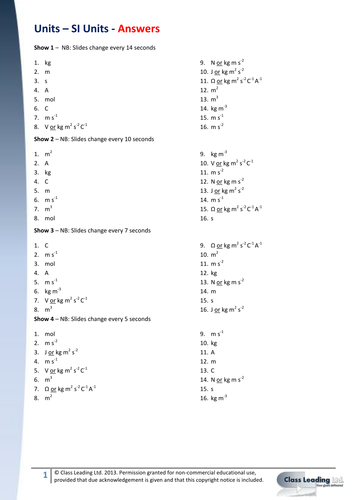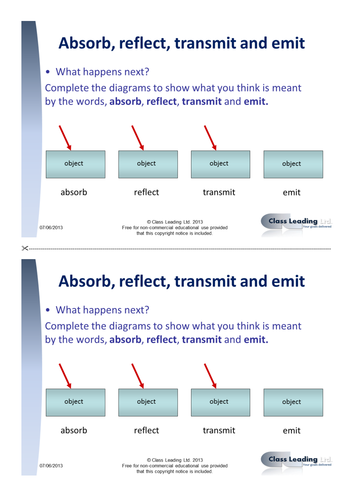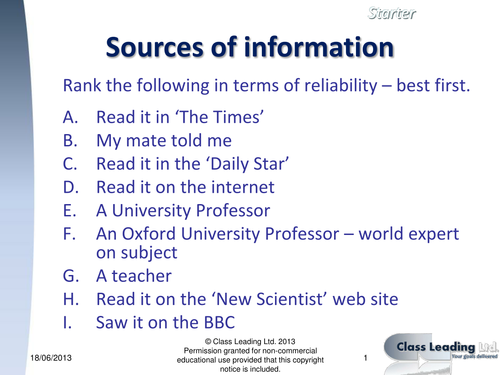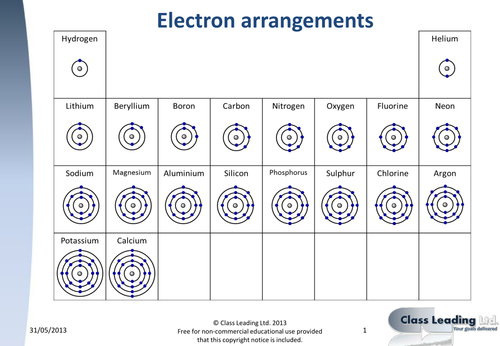312Uploads
254k+Views
192k+Downloads
All resources

Home experiment: Infrared remote control
In this video, which is aimed at KS4 pupils, you can see an infrared remote control. The remote control is pointed at the camera and a button is pressed. You can see the signal from the remote control, even though it would be invisible if you were to look at it with your eyes directly. The camera used is sensitive to infrared and so shows it up on screen. Pupils may be able to repeat this experiment at home, although some cameras include infrared filters to reduce glare from sunlight, so it may not show up properly.
This resource is part of a sequence with the following three other resources:
EM spectrum grid https://www.tes.com/teaching-resource/resource-6341301
EM spectrum sort cards https://www.tes.com/teaching-resource/resource-6341302
This resource
UV lamp and washing powder https://www.tes.com/teaching-resource/resource-12952892

Experiment: UV and washing powder
In this video, which is aimed at KS4 pupils, washing powder is shown under an ultraviolet lamp. This shows the fluorescence from the washing powder as the UV light is absorbed and visible light is emitted from the powder, making it appear much brighter than the washing powder would be if it was simply reflecting the light.
This resource is part of a sequence with the following three other resources:
EM spectrum grid https://www.tes.com/teaching-resource/resource-6341301
EM spectrum sort cards https://www.tes.com/teaching-resource/resource-6341302
IR remote control https://www.tes.com/teaching-resource/resource-12952897
This resource

Experiment - melting ice & freezing wax
In this video, which is aimed at KS3 pupils, a video is shown with changes of state of matter for ice and wax.
The melting ice takes place on a two surfaces, a conductive surface (aluminium pan) and and an insulating surface (wooden chopping board). The video shows how the time of melting differs for each surface.
The experiment also shows wax freezing on the same two surfaces.
Pupils can compare the times and suggest explanations as to why the times differ. The video includes prompts to support their thinking.

Thinking About: Energy stores & pathways in toys
In this video, which is aimed at pupils in KS3/4, there are a series of toys shown in action. Pupils are asked to consider the energy stores that the toys represent.

Thinking About: A hot-air balloon rising
In this video, which is aimed at KS3/4 pupils, a hot air balloon is shown rising. Pupils are asked to describe and explain what they see and are reminded that there is a heater in the balloon. This can be used as part of a lesson about density, where pupils can use the idea of the hot air being less dense than the cooler air around it, therefore causing the balloon to float.

Experiment: Tangerine mystery
In this video, which is aimed at pupils in KS4, a tangerine is shown. Firstly it is weighed, then is shown floating on water. Then it is peeled, weighed again, and then pupils are asked to predict what will happen when it is placed in water. There is an element of surprise in the video that aims to help challenge preconceptions that they might hold.

Experiment: Making a fruit 'battery'
In this video, which is aimed at KS3/4 pupils, a fruit ‘battery’ is shown. The ‘battery’ has been made with different pairs of metals for the electrodes. Readings are shown in the video for the potential difference (voltage) across the electrodes for each pair. Pupils can then consider the connection between reactivity of the metals and the results of the experiment.

Maths Skills - Units - SI Units Starter
These are a sequence of powerpoint shows designed as an instant engagement task (rolling on screen as learners enter the room for immediate engagement with learning). Learners write down the the SI units for the named quantity. More able learners could provide SI units in terms of fundamental base units. They are essentially the same task (with rearranged slides) but get progressively more demanding (as the changeover of slide gets faster) as the numbers in brackets increase. Start the students with (1) and then as they get faster, use the more demanding versions

Do Try This At Home: Modelling a 'day' - daytime and night-time
This is a video to support the teaching of space to KS2 pupils. In the video, it describes how you can model daytime and night time to help pupils understand that this is caused by the rotation of the Earth. It also explains the changes that happen during the seasons.

Video - Why do we need to learn about space
This video is aimed at KS2/3 pupils and helps them to think about why they need to learn about space.

Video Experiment: A pair of forcemeters
In this video, you will see an experiment where a pair of identical forcemeters are pulled apart. There are questions that focus pupils on the force pair interaction. It asks pupils to make predictions, then shows what happens in the experiment.

Models of the atom - Comparison
This activity aims to clarify thinking around the models of the atom that scientists use, and why we have more than one model.
A slideshow that compares different models of the atom, the timeline of discovery and summarises the uses of each model.
Key words: Model, Plum-pudding, Rutherford, Dalton, nuclear.

P2 Images, compression and file size
Keywords: Image, quality, file size, download time, compression
A series of activities that use a familiar image to get across the relationship between file size and image quality. It also supports learners to consider the effect of compression on image quality. It was intended to use the powerpoint show as a starter and follow it up with the file size worksheet, then the compression worksheet. Originally designed for unit P2 of 21st Century Science. Right click the web link to download the powerpoint show.

Seismic Waves - graded questions
This activity contains a powerpoint with graded questions & answers and matching pupil activity sheets, designed to be used at the end of a lesson and/or the start of the next lesson to review previous learning. The questions are based on OCR 21st Century Science Specification, although could be used with other exam boards.\nClicking through the show reveals answers one a time. There are two slightly different activity sheets for differentiation - one has key words, the other without. These reduce to A5 easily, the ideal size for most pupils. Please note grades are approximate.

Measuring with oscilloscopes
Keywords: p.d., voltage, potential difference, frequency, time period, time base, measurement
This resource has a powerpoint show with worked examples of how to calculate p.d., frequency etc. using an oscilloscope.
It is supported by graded intended learning outcomes and an independent learning task, which set as home learning has resulted in students being extremely creative.
Right click the web links to download the powerpoint shows.

Draw the meaning - absorb, transmit & reflect
This activity helps learners ‘draw the meaning’ of key words to do with light/radiation. It tests what learners think these words mean and builds an understanding of the concept behind each word. Two slightly different versions - one adds the word ‘emit’. Great as an instant engagement starter (on a sheet on the desk and shown on screen on entry to the room) to a lesson where these ideas will be explored. Also helpful for GCSE students recapping ideas before applying them in a context such as the greenhouse effect. Right click the web links to download the powerpoint shows.

Sources of information - starter
This resource is an was originally designed for instant engagement, to be on display on entry to the room. The students are given a period of time (say 3 minutes) to rank order the sources of information. This works well in groups with mini-whiteboards. The teacher then asks students to indicate whether each source was in the top 3, middle 3 or bottom 3 – e.g. by show of hands. This supports a discussion on reliability and disagreement between groups provides chance for cognitive conflict and students explaining their reasoning. It was originally designed as a starter to LSS activity 3.1

Electron arrangement worksheet
This resource contains a worksheet and answer sheet for showing the electron arrangements of the first 20 elements.
A premium resource is also available that shows an animated PowerPoint slideshow and has a variety of different sheets with various levels of scaffolding to support learners. This can be found here: https://www.tes.com/teaching-resource/-12957111

Resistance of LDR & thermistor - graded questions
This activity contains a powerpoint with graded questions & answers and matching pupil activity sheets, designed to be used at the end of a lesson and/or the start of the next lesson to review previous learning. The questions are based on the previous OCR 21st Century Science Specification unit P5, although could be used with other exam boards.\nClicking through the show reveals answers one a time. These reduce to A5 easily, the ideal size for most pupils. Please note grades are approximate.

Average & Instantaneous speed - graded questions
This activity contains a powerpoint with graded questions & answers and matching pupil activity sheets, designed to be used at the end of a lesson and/or the start of the next lesson to review previous learning. The questions are based on the previous OCR 21st Century Science Specification unit P4, although could be used with other exam boards.\nClicking through the show reveals answers one a time. These reduce to A5 easily, the ideal size for most pupils. Please note grades are approximate.




















